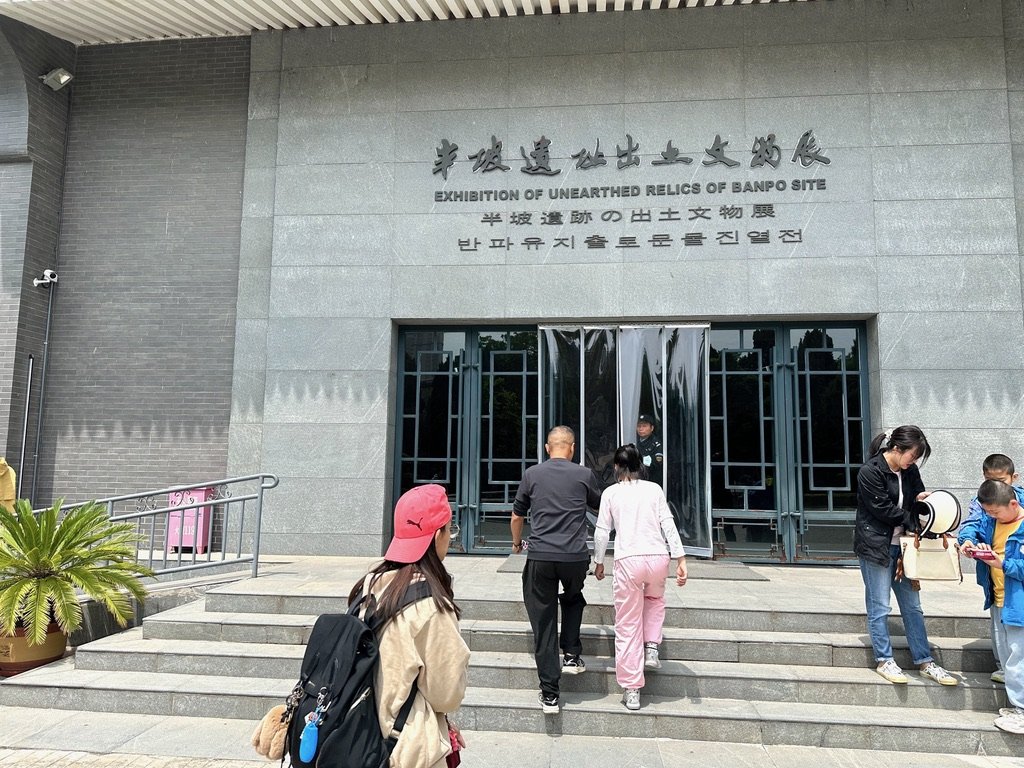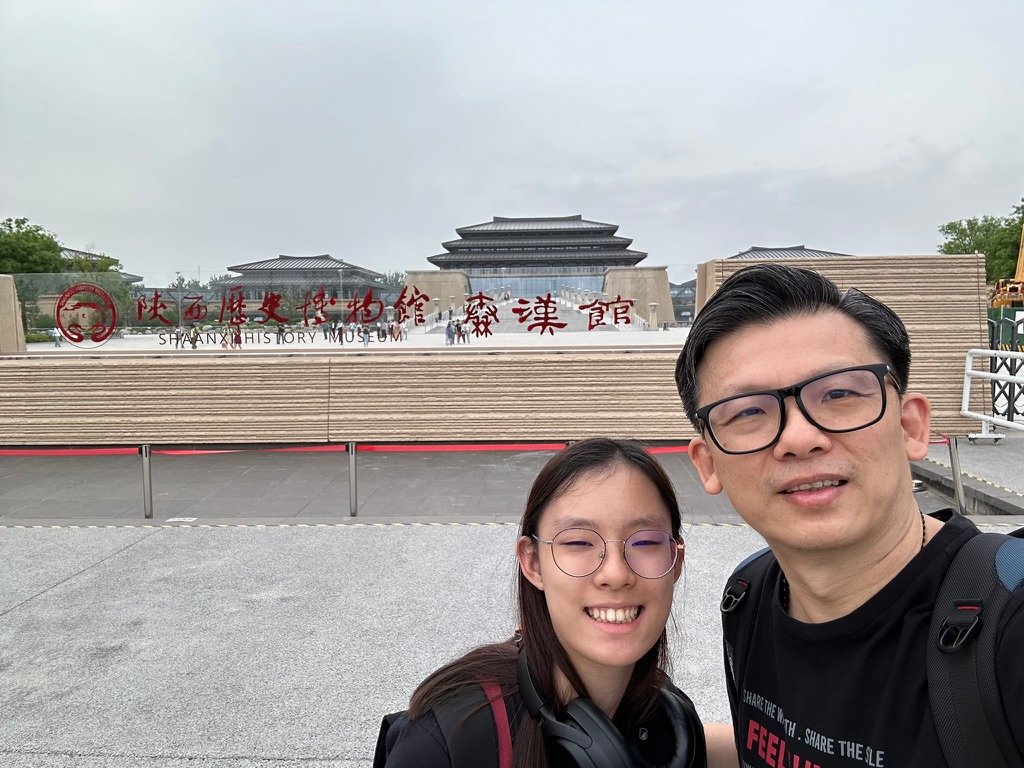When you think of Xi’an (西安 Xī’ān), the Terracotta Army (兵马俑 Bīngmǎyǒng) or the ancient city wall (城墙 Chéngqiáng) probably comes to mind. But tucked away in a quiet neighborhood east of the city lies a lesser-known treasure: the Banpo Museum (半坡博物馆 Bànpō Bówùguǎn).
To our surprise, it ranks among the Top 20 attractions on TripAdvisor—a clear sign that travelers, despite what many think, actually love museums when they bring history to life.
We decided to give it a visit—and what we found was a genuinely eye-opening experience for both Elaine and me.
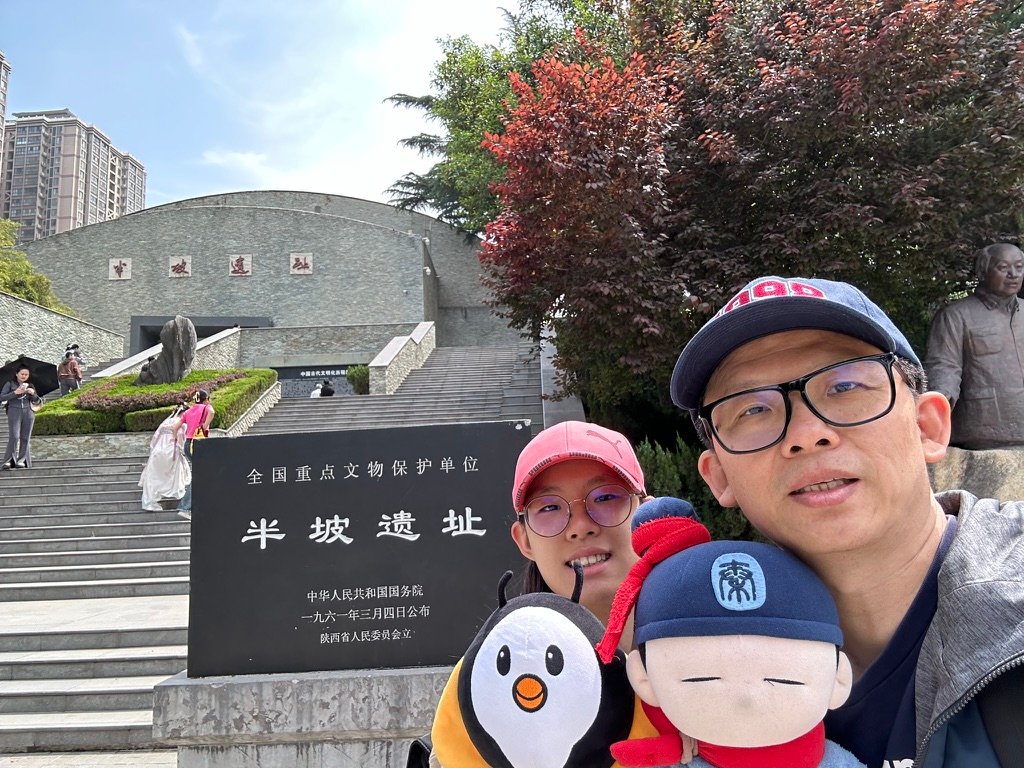
When you think of Xi’an (西安 Xī’ān), the Terracotta Army (兵马俑 Bīngmǎyǒng) or the ancient city wall (城墙 Chéngqiáng) probably comes to mind. But tucked away in a quiet neighborhood east of the city lies a lesser-known treasure: the Banpo Museum (半坡博物馆 Bànpō Bówùguǎn).
To our surprise, it ranks among the Top 20 attractions on TripAdvisor—a clear sign that travelers, despite what many think, actually love museums when they bring history to life.
We decided to give it a visit—and what we found was a genuinely eye-opening experience for both Elaine and me.
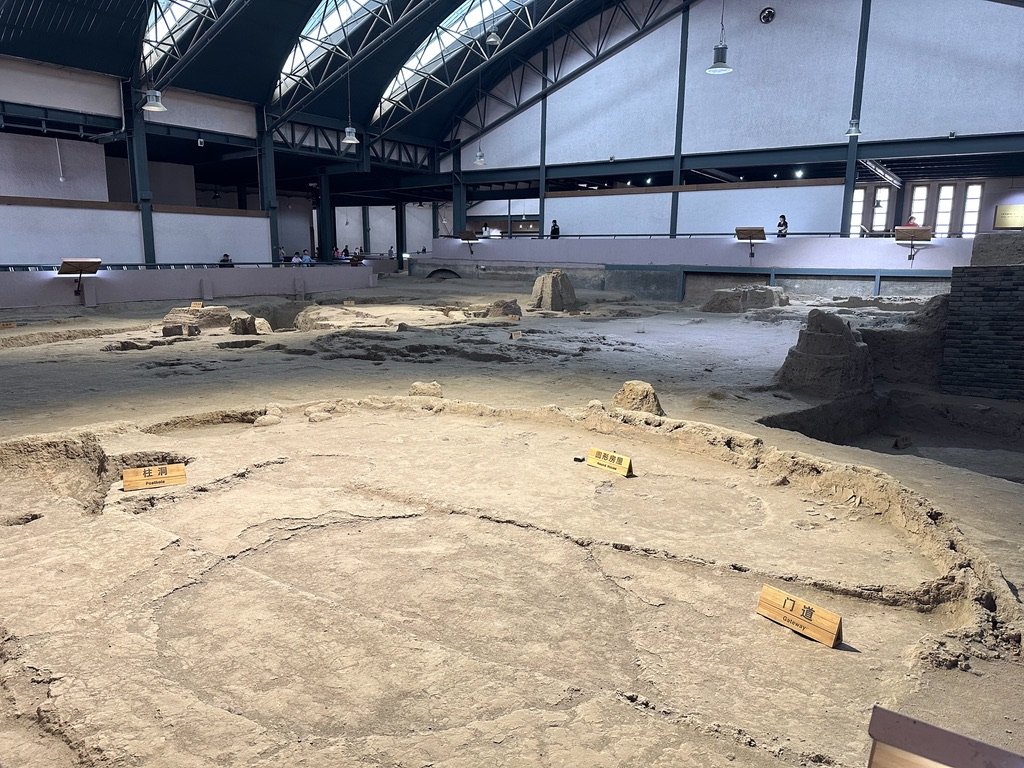
A Neolithic Window into Prehistoric China
Banpo Museum is not your average museum. It’s actually built on the original archaeological site (半坡遗址 Bànpō Yízhǐ) itself, making it feel more like a living excavation than a dusty gallery.
The main exhibit hall is a separate building constructed right over the ancient ruins, and inside, suspended walkways let visitors look directly down at the actual remnants of a 6,000-year-old village.
The exhibits are highly visual and thoughtfully bilingual—every description is provided in both Chinese and English, which makes it exceptionally friendly for Western visitors and international students. And that’s what makes this museum stand out—it invites you to imagine, not just read.
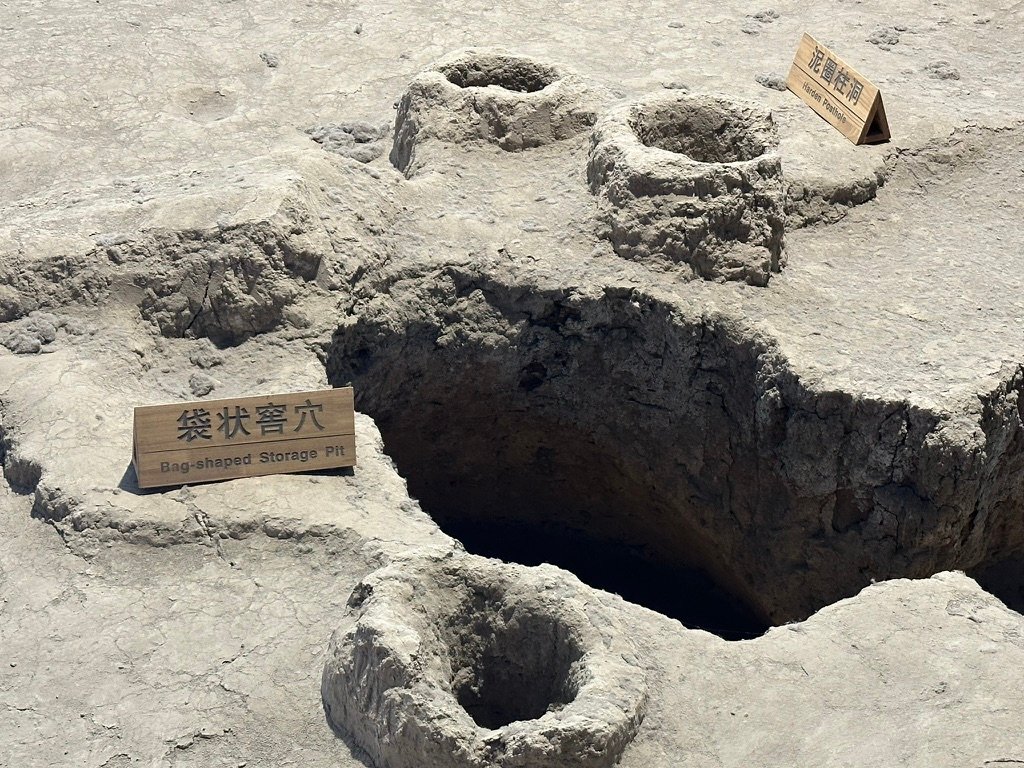

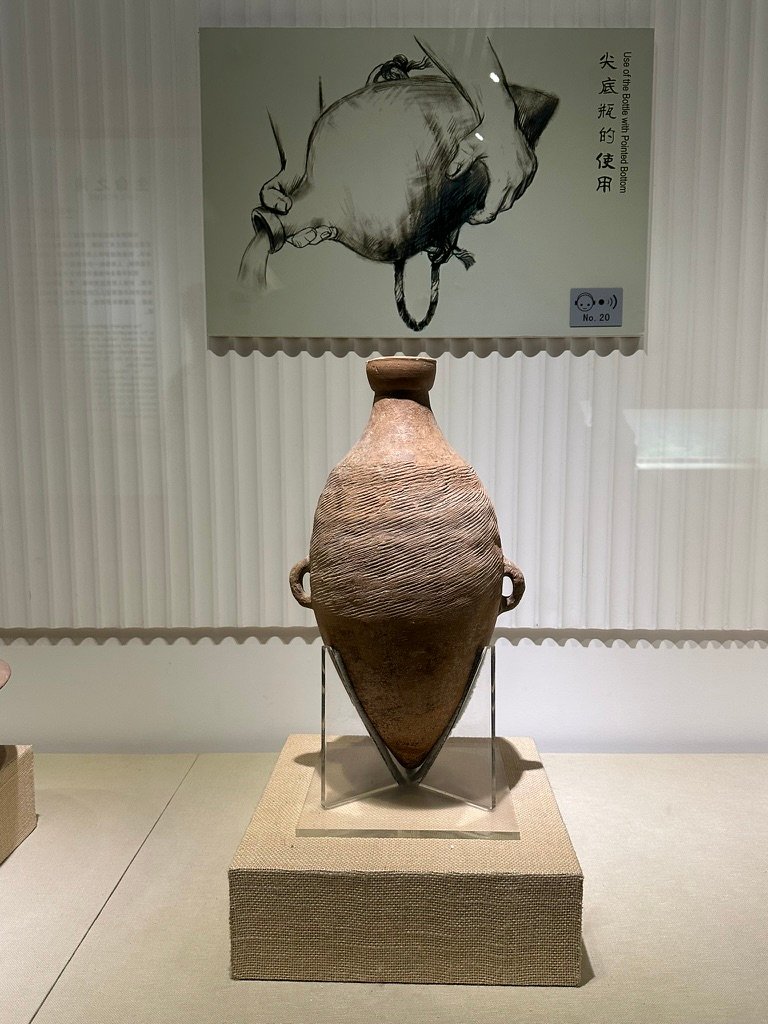
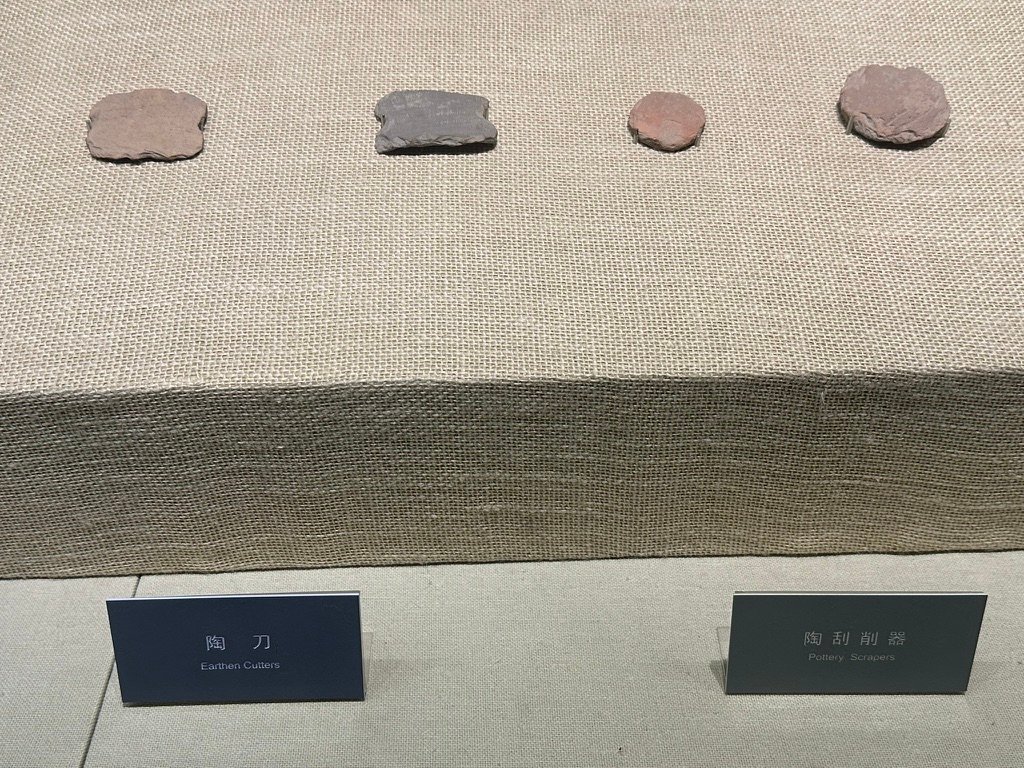
Why Banpo Is So Important – Especially for First-Time Visitors to China
Banpo isn’t just important in Chinese history — it holds global significance in the study of early human civilization.
Discovered in 1953 and excavated in the 1950s and 60s, Banpo represents one of the most complete and earliest Neolithic settlements ever found in East Asia. It belonged to the Yangshao culture (仰韶文化 Yǎngsháo Wénhuà), a prehistoric society that thrived along the Yellow River about 6,000 years ago, during the Neolithic period (新石器时代 Xīn Shíqì Shídài).
This makes Banpo older than the Pyramids of Egypt and Stonehenge in Britain, placing it firmly on the world map of humanity’s ancient origins.
The site offers rare and detailed evidence of:
Matriarchal society structures (母系社会 Mǔxì Shèhuì)
Advanced pottery-making techniques (陶器工艺 Táoqì Gōngyì)
Early agriculture (早期农业 Zǎoqī Nóngyè)
Community housing with trenches and drainage systems
And the beginnings of spiritual belief systems, as shown through burial practices and symbolic artwork
For first-time travelers, especially those unfamiliar with Chinese history, Banpo is a gateway into understanding how ancient Chinese civilization started—not through emperors and dynasties, but through everyday people.
Visiting Banpo offers something rare: a human-scale view of history, focused not on kings and wars, but on food, family, tools, and survival. It’s about how people lived, loved, and worked together in the very earliest stages of urban life.
This is a story that transcends borders and timelines — a story that belongs to all of us as human beings.
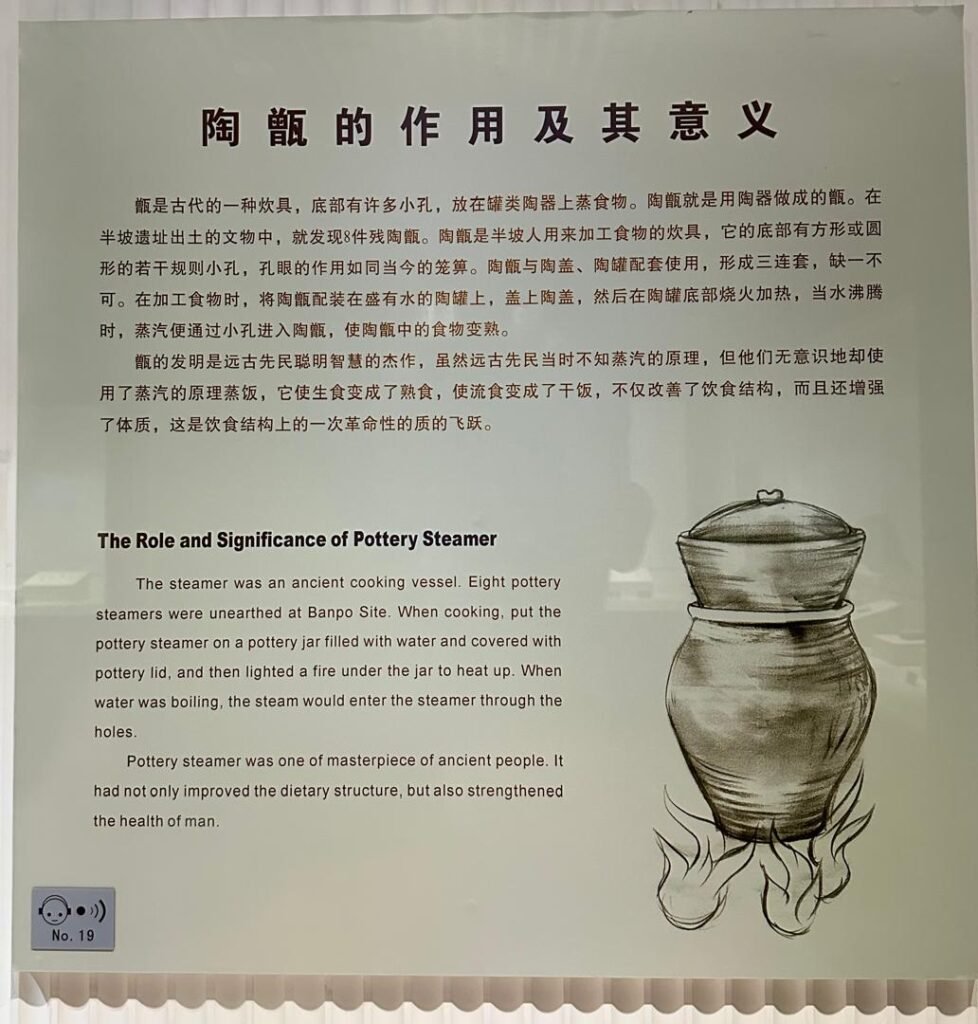
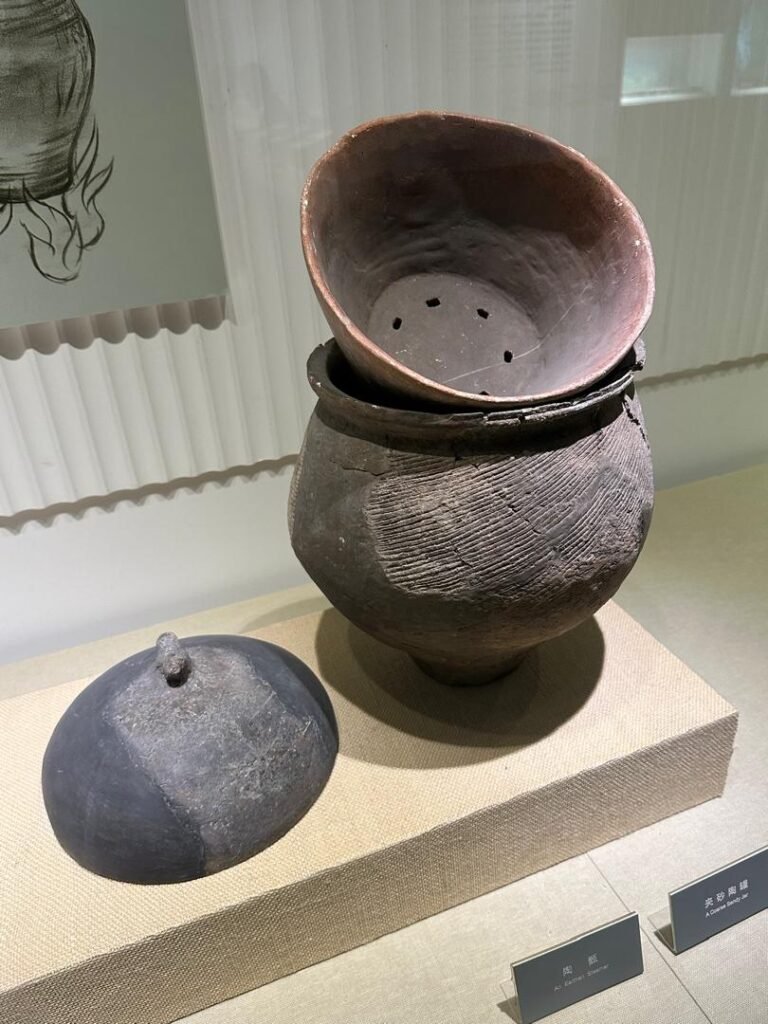
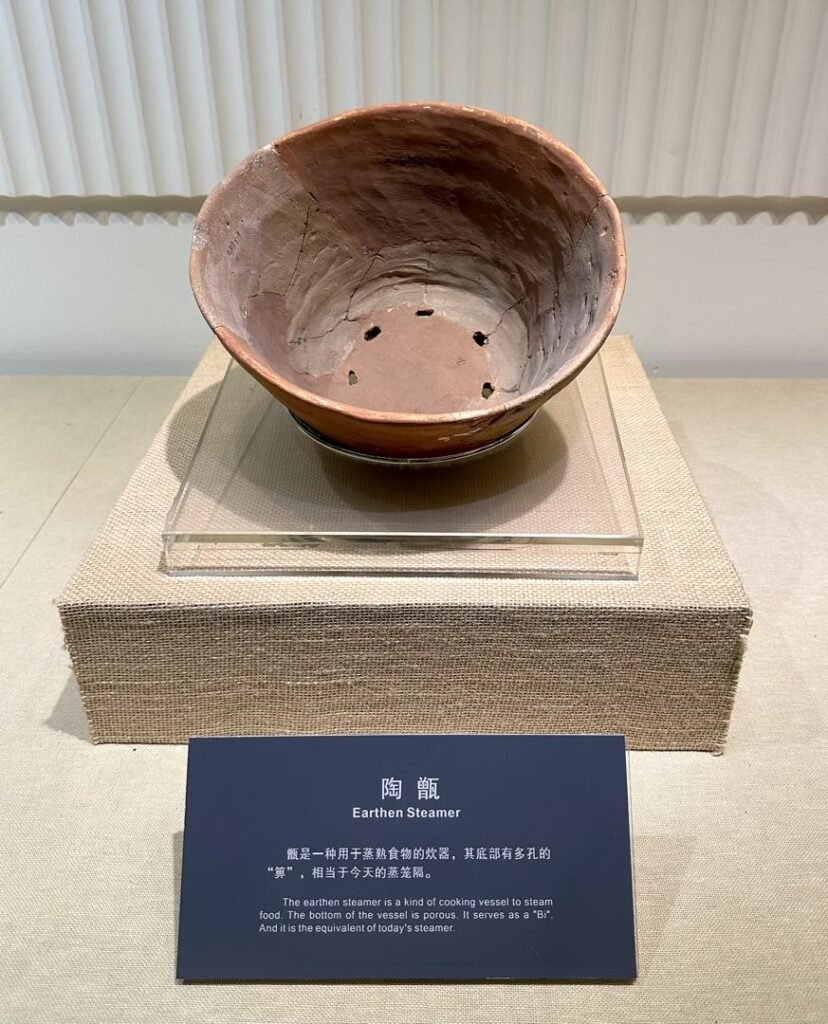

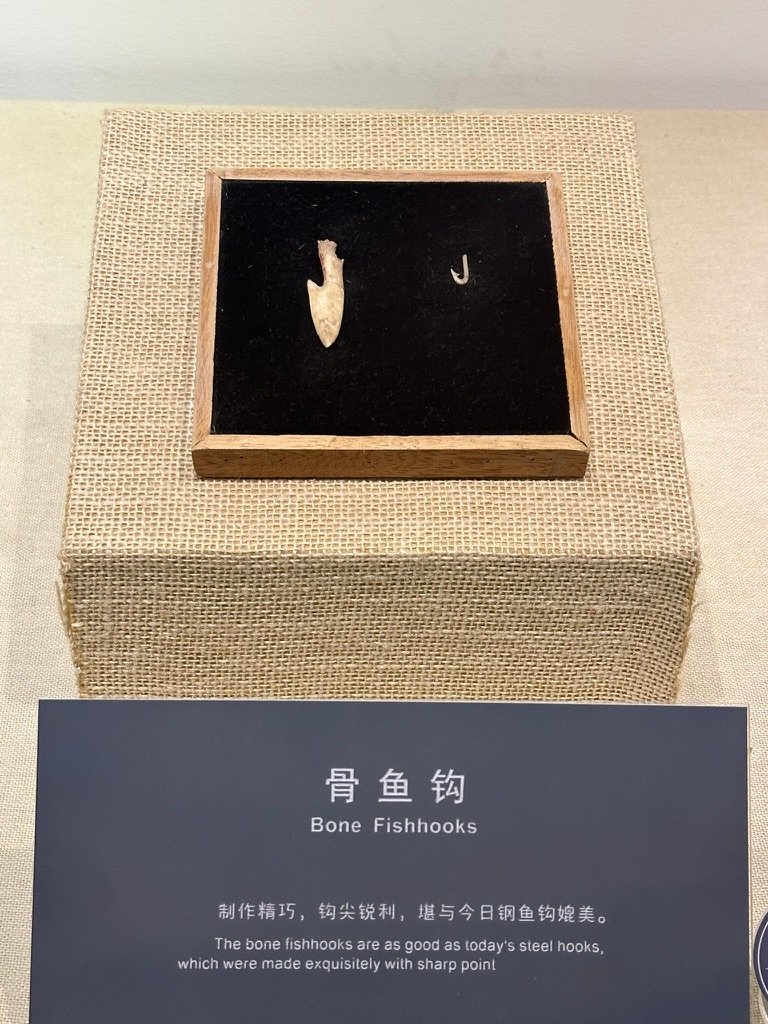

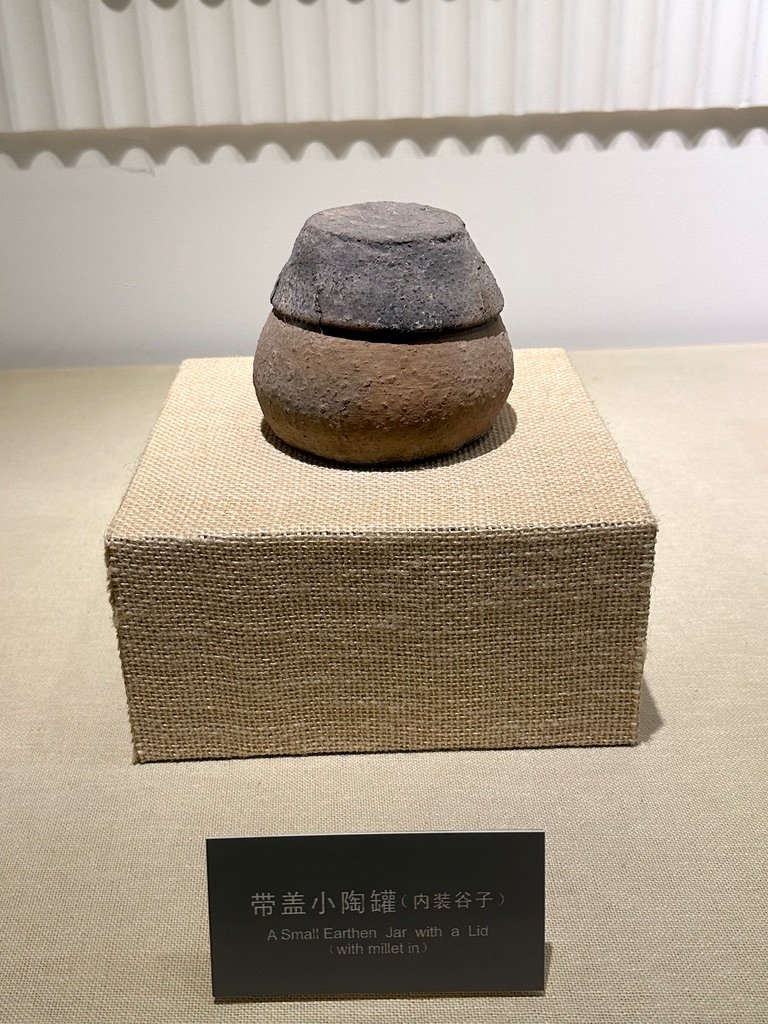
Life 6,000 Years Ago: More Advanced Than We Thought
Elaine was especially fascinated.
“I thought the Stone Age was just caves and rocks,” she whispered at one point. But here at Banpo, the picture was very different.
Through the clay steamers (陶甑 táo zèng), fishhooks (鱼钩 yú gōu), covered pots (带盖陶罐 dài gài táo guàn), and other everyday tools on display, she realized just how advanced these Neolithic (新石器 Xīn Shíqì) people were. They weren’t just surviving—they were organizing, farming, crafting, and even steaming their food!
“So Chinese people started steaming things 6,000 years ago?” Elaine asked, wide-eyed.
Exactly. These early ancestors weren’t primitive—they were pioneers of a developing civilization. And thanks to the Banpo archaeological dig (半坡遗址 Bànpō Yízhǐ), we have clear, physical proof of how sophisticated they really were.


A Museum That Feels Personal
What sets Banpo Museum (半坡博物馆 Bànpō Bówùguǎn) apart is that it doesn’t feel cold or distant. Instead of overwhelming you with royal treasures or vast timelines, it introduces you to the daily lives of ordinary people from 6,000 years ago.
That human connection made the whole experience deeply moving.
Elaine remarked how amazing it was that people had already formed social structures, understood agriculture (农业 nóng yè), practiced spiritual beliefs (信仰 xìn yǎng), and developed unique artistic styles—all without modern tools or machines.

Why You Should Visit
If you’re traveling with kids, studying history, or simply love discovering humanity’s roots, Banpo Museum (半坡博物馆 Bànpō Bówùguǎn) is an absolute must.
It’s easy to navigate, friendly to non-Chinese speakers, and the artifacts tell a compelling story without needing too much explanation.
It also challenges the stereotype that museums are boring. Elaine walked out inspired—and so did I. We learned, laughed, imagined, and left with a newfound respect for the ingenuity of early Chinese civilization (中国早期文明 Zhōngguó zǎoqī wénmíng).
Another reason this museum is so convenient for visitors: it’s only one metro ride away! Just hop on Metro Line 1 (地铁1号线 Dìtiě Yī Hào Xiàn) to Banpo Station (半坡站 Bànpō Zhàn).
From there, it’s a leisurely 20-minute walk, or you can hop on an electric bike or shared scooter for under 10 yuan (人民币 rénmínbì)—another fun and memorable part of the experience for Elaine.
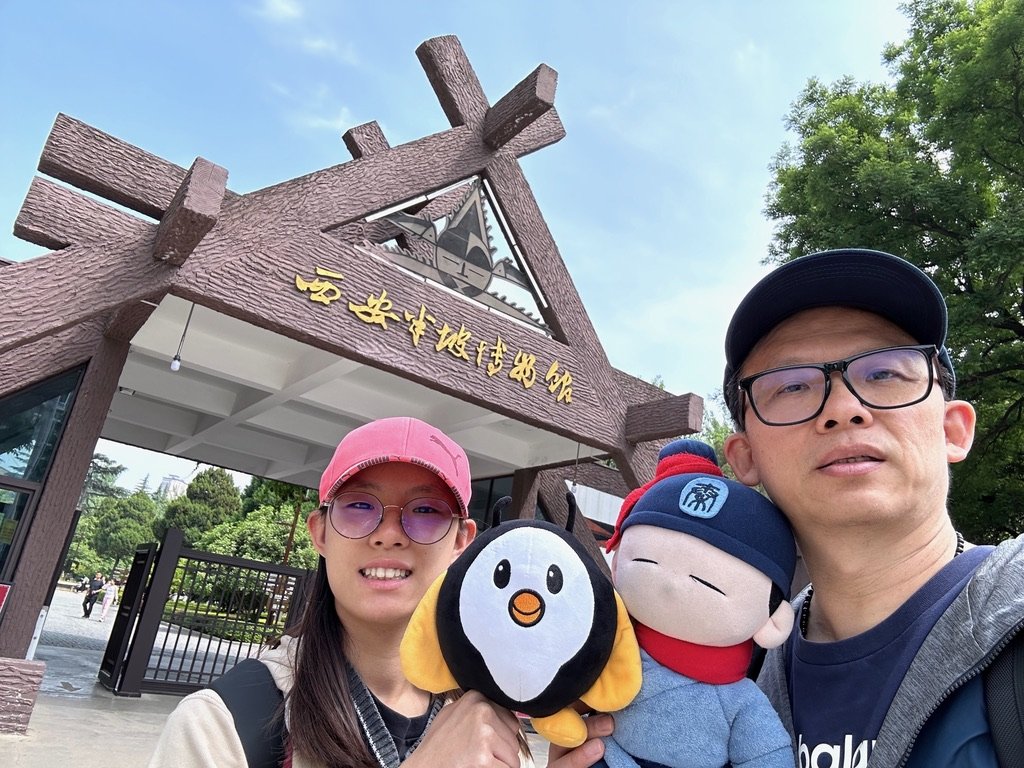
Tips for Visiting
Before or after your museum visit, you’ll find convenient dining and shopping options nearby:
Lunch options: Several local eateries and noodle shops are directly opposite the museum entrance—perfect for grabbing a hot meal after exploring.
Snacks: For families, packing light snacks (小吃 xiǎo chī) and water is a smart move, especially for children who might get tired during museum visits.
Coffee break: Right next to Banpo Station (半坡站 Bànpō Zhàn) is a modern shopping mall, where you’ll find a Luckin Coffee (瑞幸咖啡 Ruìxìng Kāfēi)—Elaine’s favorite post-museum treat. It’s a great way to relax and unwind before heading to your next destination.
These small comforts can make the whole experience more enjoyable, especially for young travelers.

